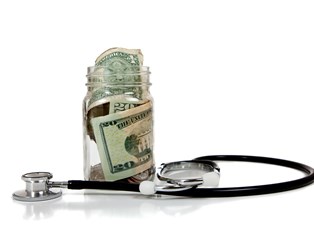The Affordable Care Act affects individual taxes obligations in some significant ways. Staged over a period of eight years, the ACA changes and increases tax obligations for individual and joint filers. While some changes are minor or affect particular classes of filers, the law has a sweeping impact.
Individual Taxes
The tax impact of the ACA should be small for most taxpayers. The big change from 2013 is still in effect -- a higher threshold for itemization of medical expense deductions was implemented that changes the threshold will to 10% of the adjusted gross income. For example, a family earning adjusted $55,000 will have to exceed $5,500 before itemizing deductions. Taxpayers with an adjusted gross income in excess of $200,000, or $250,000 combined will pay a 3.8% percent increase in taxes on interest and dividend income.
There are additional Medicare taxes on wages and compensation for high-income taxpayers. For adjusted gross income earners of $200,000 or $250,000 filed jointly, employers must deduct an additional 0.9% tax on wages over $200,000. However, the tax did not apply to joint incomes below $250,000, the IRS would refund or credit any taxes withheld. These changes apply to wage earners who earn income from self-employment or employed elsewhere.
As of 2014, one must have essential health insurance coverage or pay a tax penalty. Uninsured penalty taxes are $95 per adult and $47.50 per child up to a maximum of $285.00. In Tax Year 2015, the non-coverage penalty rises to the greater of 2% of annual 2015 income or $325 per person. One must pay the penalty for taxpayer, spouse, and all dependents. The statutory maximum of three times the individual penalty, or a total of $975.
Business Taxes
The Affordable Care Act affects tax obligations of business owner-taxpayers with fifty or fewer employees. Starting in tax years 2010 and extending through 2018, changes connect to implementation of the health care law. Employers will receive credits and incentives for providing health insurance coverage.
In tax years 2010 through 2013, Small Businesses with 25 full-time employees or equivalent, received a tax credit for paying healthcare coverage. This Small Business Health Care Tax Credit applied to Small Businesses, defined as those with 25 or fewer full-time employees. These businesses received a 35% tax credit if employees' average salaries were $50,000 or less; and if the employer paid premiums into a qualified health insurance arrangement. Last year’s credit rate was 35% of the lesser of the actual contribution or the average premiums in the applicable area small group rate.
Some additional Small Business Health Care Tax Credit changes took effect this year. The small business maximum credit for premiums paid for employees' health care coverage increased from 35% to 50% for 2014 and later. To receive this credit, businesses must pay premiums for a qualified health plan offered through a Small Business Health Options Program Marketplace. Businesses can receive this credit for two consecutive taxable years.
Finally, starting this year, businesses must meet the full Affordable Care Act insurance requirement. Now, businesses with more than 50 full-time or equivalent employees must offer health insurance to their employees or pay a penalty. Finally, starting in 2018, employers must pay a 40% excise tax on certain high-value health insurance plans. Commonly referred to as "Cadillac Health Plans," the 40% excise tax applies to coverage that will cost more than $10,200 for individuals or more than $27,500 for family coverage. Indexed to inflation, the government adjusts these amounts and the requirement contains exceptions for high-risk professions and employers with a disproportionately older populations.



